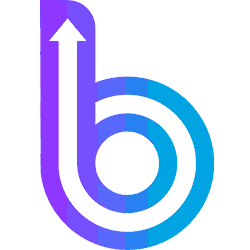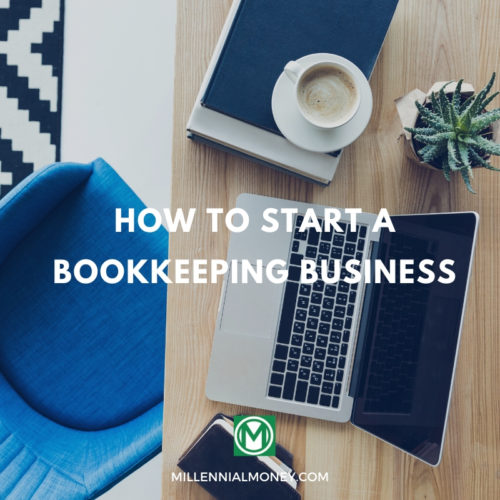Choosing a career path is one of the most essential parts of life. It is also one of the most stressful decisions that you will make.
Perhaps you are just beginning a career, or perhaps you are looking for a career change that allows more flexibility. If either is the case, bookkeeping is a path worth considering.
Bookkeeping allows people to work from their homes and maintain flexible work hours. However, it is not for everyone, so it is important to know if bookkeeping is the right career choice for you.
If you are curious about bookkeeping as a career and how to become a professional bookkeeper, keep reading to learn more.
What is a Bookkeeper?
A bookkeeper is a mix between an office administrator and an accountant. They are in charge of a variety of tasks, but their main focus is on collecting, updating, and organizing information related to a business’s financial activity.
Many people confuse bookkeepers with accountants. However, they are not the same thing.
The main difference between the two is that a bookkeeper organizes financial data while an accountant interprets financial data. A bookkeeper makes sure that all the information that the business has is accurate and up to date. An accountant will use the data to create reports and determine the financial next steps for the business.
Also, accountants require far more education and more difficult certification processes than bookkeepers do. Bookkeeping is often a good start for aspiring accountants.
What Do Bookkeepers Do?
So, what kinds of things do bookkeepers do?
A bookkeeper is in charge of a lot of different things when it comes to a business’s accounting activity. A bookkeeper may keep track of spending, handle payroll, ensure compliance with state and federal regulation, reconcile payment discrepancies, and more.
A bookkeeper must be able to juggle a lot of different tasks throughout the day. We will cover skills that are essential for bookkeepers further down.
How Much Can Bookkeepers Make?
Because it requires less education and certification to become a bookkeeper, they tend to make less than an accountant. But how much can you actually expect to make as a bookkeeper?
The starting salary for a bookkeeper is typically about $17 per hour. This can increase with additional education, training, and experience.
On the higher end, a bookkeeper can make about $60 per hour. This is a very high salary for a bookkeeper, so you will not get there until you are a seasoned professional.
In terms of salary, the average salary for a bookkeeper is about $45,000 per year, which is nothing to sneeze at. With time, you can earn more than this and go on to become an accountant.
What Skills Does Bookkeeping Require?
Bookkeepers deal with a ton of different things daily, and there are skills that predispose people to success. Here are some traits that are essential to be a successful bookkeeper.
Attention to Detail
Bookkeepers are in charge of many important financial documents and must update them. This means that they have to ensure that all the information that they input is correct down to the cent.
If the tiniest detail slips through the cracks, it could mean that an entire report is off. Depending on the detail, this could be a sizable mistake.
Mathematical Abilities
As a bookkeeper, you work with numbers on a daily basis.
Between calculations and budget monitoring, you must be comfortable moving numbers around and performing multiple computations a day. They also track credits and debits and may even help put together complicated financial reports.
If you describe yourself as “not a math person,” bookkeeping is not the position for you.
Organization
Bookkeepers have their hands in multiple different projects at once, which means they must stay organized.
The information that your clients give you is extremely important, and they want to know that you are handling it properly. Between different clients and multiple tasks, you must be able to track all the information that you’re given and store it in a way that you can find it in a moment’s notice.
Organization is crucial to the success of a bookkeeper, so be sure to set up good habits early.
Ability to Multitask
In the vein of organization, you also must be comfortable multitasking throughout the day.
Bookkeepers are not limited to one or two essential duties but are expected to juggle multiple tasks throughout the workday. If you have trouble shifting your focus from one task to another, bookkeeping may not be the best choice for you.
Trustworthiness
Trust between a bookkeeper and a client is essential for a successful partnership.
As a bookkeeper, you are handling highly sensitive financial information for a client. They want to know that they can trust you to manage it correctly and not act carelessly with it.
Make sure that you store all your data on an external hard drive and keep sensitive information in a secured place.
Customer Service
As a bookkeeper, you will be dealing with lots of different people.
Among banks and your client’s customers, you represent your client’s business. Your client expects you to treat them professionally on their behalf. This requires patience, understanding, and expertise.
Problem Solving
In every job, you are bound to deal with a problem that needs solving. Bookkeeping is no different.
You will need to deal with discrepancies in financial reports, reconcile expenses, and manage multiple conflicting deadlines at once. This requires planning, organization, and problem-solving.
How Do I Become a Bookkeeper?
Many people often ask how long it takes to become a bookkeeper. This question yields different answers, depending on educational tracks and other factors.
However, there are a few steps that are essential to becoming a successful bookkeeper.
Here are the steps to take to become a profitable bookkeeper.
Get Your Degree
While you can become a bookkeeper right out of high school with the right connections, it is most helpful to have at least an associate or bachelor’s degree in accounting or finance.
While you’re earning your degree, you can take classes in accounting and bookkeeping to learn the technical side of the business. Your courses will also teach you skills like preparing invoices, creating financial reports, and managing a general ledger.
Once you earn your degree, you will have a much easier time landing bookkeeping jobs.
Start an Internship
This step can be achieved before or even while you’re earning your degree.
Paid internships are a great way to dip your toe into a profession while making a little extra money on the side.
Many accounting and bookkeeping firms seek high school and college students to assist in accounts payable, accounts receivable, or as office administrators.
This is a great way to make contacts, learn essential software, and decide if bookkeeping is really for you.
Learn the Software
In the same way that a photographer needs to master photoshop, you will need to master programs like QuickBooks and Excel.
Becoming comfortable in the software is essential to the job. Download the software to your computer, watch YouTube videos to learn how they work, and become familiar with the essential functions of each program.
If you would like to know more about the best software to learn as a bookkeeper, be sure to check out Bookkeepers’ three-part series on how to become a bookkeeper.
Build Your Client Base
Everyone has to start somewhere, but how do you take your first step?
People often get their first online bookkeeping jobs through referrals. The same goes for getting clients. By attending networking events and talking to your friends about potential opportunities, you can find tons of clients simply by forming relationships.
If you work your network and are still having trouble, turn to job boards. Online tools like FlexJobs, LinkedIn, and Indeed can help you market yourself to people online and find new opportunities.
Once you have a client base, you can begin honing your craft. You can gain experience and eventually raise your prices. Some clients may fall away, but this will make way for new clients with deeper pockets.
Get Your Certification
Once you have been working as a bookkeeper for two years, you are able to get certified.
Issued through the American Institute of Professional Bookkeepers, the certification involves taking a four-part exam and adherence to a code of ethics. You are able to list yourself as a Certified Bookkeeper going forward.
Becoming a Certified Bookkeeper makes you a more attractive candidate to potential clients. After becoming certified, you are also able to charge more than someone who is uncertified.
Get Licensed
If you would like to become even more accredited, you can become a licensed Certified Public Bookkeeper through the National Association of Certified Public Bookkeepers.
This is the highest distinction that you can earn as a bookkeeper. Beyond this, it would be best for you to transition into a career in accounting.
This certification is an excellent investment for anyone that is serious about a career in bookkeeping or accounting.
Continue Your Education
Once you become a licensed Certified Public Bookkeeper, you will need to complete at least 24 hours of continuing education or CE classes per year to keep your license.
Some may think that this is annoying, but it is really an opportunity. As the technology surrounding record keeping and finance continues to evolve, bookkeepers will need to keep up with the pace of change.
Convincing your clients that they need you despite these technologies is half the battle. CE courses can teach you new ways of selling your services and connect you with other bookkeepers who can refer business to you.
Are There Any Resources for Aspiring Bookkeepers?
There are plenty of resources for aspiring and established bookkeepers to improve their practice.
There are several professional groups that exist to bring bookkeepers together and set industry standards.
Here are some of the most notable professional organizations for bookkeepers:
- National Association of Certified Public Bookkeepers (NACPB)
- American Institute of Professional Bookkeepers (AIPB)
- Institute of Certified Bookkeepers (ICB)
- National Bookkeepers Association (NBA)
These groups offer continuing education courses, tips on how to run your business, publications that are pertinent to bookkeepers, and events that connect bookkeepers around the country. They are helpful groups to get involved in if you’re looking to connect.
Also, there are often local small business groups that you can join. You’ll not only meet other bookkeepers, but you can meet other small business professionals and learn tips about how to run a business in your town.
Should You Become A Bookkeeper?
Being your own boss is a lot of people’s dream, but there is a lot that comes with the territory.
If you are an organized, conscientious person that is good with numbers, you may want to consider becoming a bookkeeper or even start your own bookkeeping business. It is a great way to make money on your own time in your home.
If you would like more information on how to get started, check out Bookkeepers’ series on starting out as a bookkeeper.






No comments yet. Add your own